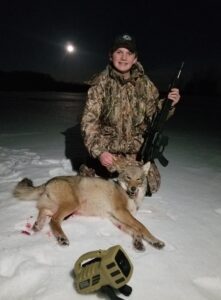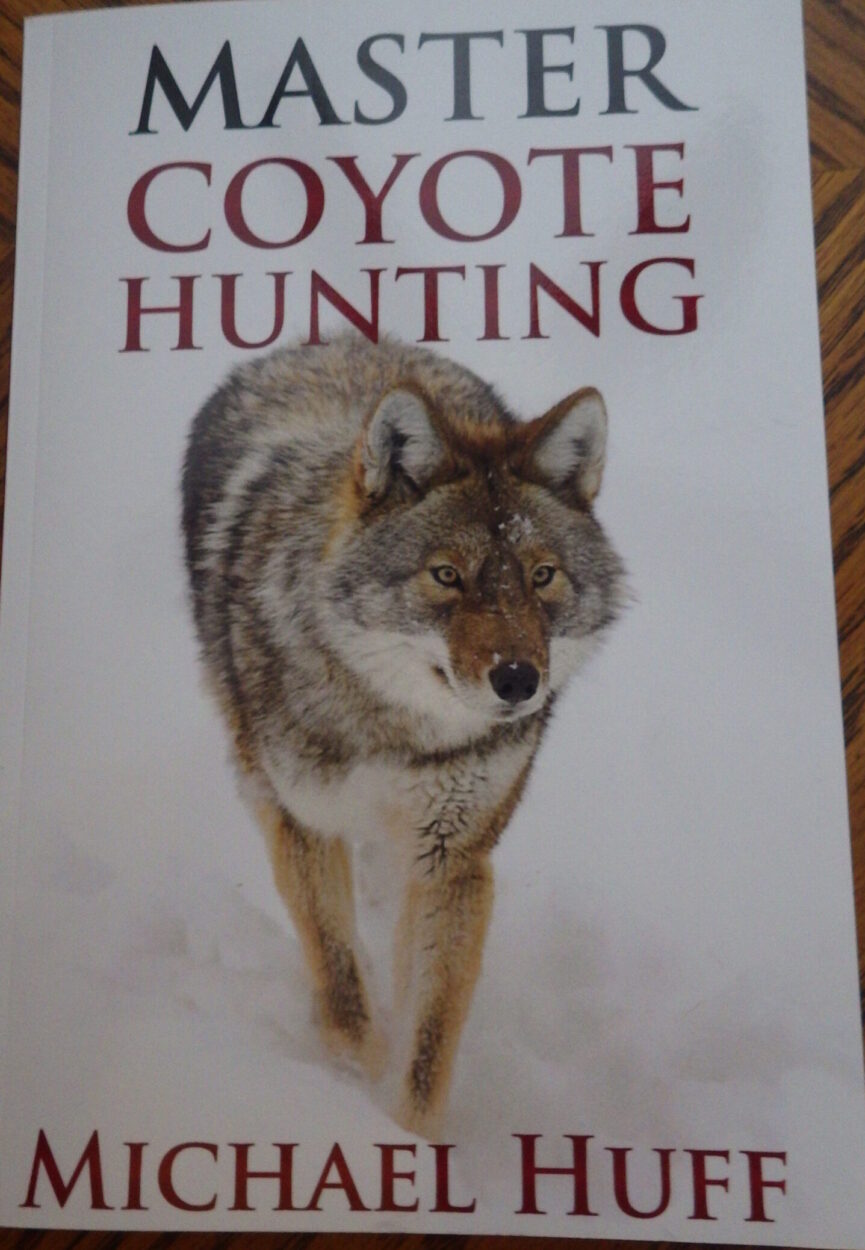
?
By: Tom Loundsbury.
Predator hunting has become quite popular, with the main star of the event these days being the coyote, an amazingly adaptable (and very prolific) critter which has expanded its range across North America (beginning in the 20th Century) and has recently even ventured beyond the Panama Canal into South America. It is now found in states where coyotes have never been documented before, and can be found in every county of Michigan, even in suburban and urban areas.
I first began seeing coyotes in the Thumb area during the 1980’s, and their population has steadily increased. From what I’ve observed in the field and heard from others, as well as what has been regularly seen on trail-cameras, is that coyote numbers are now at an all-time high in my neck of the woods, and I’m sure elsewhere, too. One thing which is assisting the coyote in the Lower Peninsula is an over abundant deer population and a steady supply of the resulting roadkill. Besides being superb hunters, the opportunistic coyotes are also very adept scavengers and foragers.
When the New Year begins, I automatically begin placing a special focus on coyote hunting, with January and February being my favorite months to do so, which entails the coyote mating timeframe featuring some very active coyotes, especially during the nighttime. Coyotes are generally very nocturnal, and why they can thrive close to human habitation and remain pretty much unnoticed. This nocturnal factor has led to the popular and fast-growing outdoor pastime of nighttime predator hunting which entails calling while using spotlights, lasers and thermal or night vision optics, all of which are legal to use in Michigan for predator hunting.
Some nighttime predator hunters are quite dedicated and serious about this pastime and have invested into some costly accoutrements such as a thermal scope and a suppressor (aka silencer) on a finely tuned rifle, not to mention a deluxe electronic caller (aka e-caller). I have a friend, a passionate nighttime predator hunter, who says it is well worth it, and when he told me how much his thermal scope and the suppressor cost, well, folks, it sort of took my breath away! But he sure has a great time and more power to him!
My nighttime technique is a bit more economical, and I have a soft spot for cloudless, full moon nights, especially with snow on the ground, and lights and high-tech optics aren’t required. Otherwise, I use a powerful LED flashlight (with a red lens – experts say coyotes can’t see red) which attaches to my gun. As much as I enjoy using mouth calls (and still do), I’ve grown to appreciate the advantages of an e-caller, which uses recordings of actual animals, and can be placed away from the hunter and operated by remote. (My e-caller is about the size of a small lunchbox and very easy to transport). A decoy of some sort placed near the e-caller and offering an animated focal point doesn’t hurt and I have a fuzzy battery-operated affair which looks like it’s half squirrel and half rabbit that wobbles around on a stake.
An advantage to placing the e-caller a bit away is that coyotes are very alert and cunning, and often do their final approach from downwind of the calling. I prefer placing my e-caller about 50 yards upwind of my position to fool a circling in coyote, and sometimes there is more than just one! It can get interesting, not to mention thrilling, when the pieces come together and, yep, folks, it is a unique atmosphere which can become addictive. Last winter, a friend of mine was in his deer blind when he turned on his e-caller and four coyotes suddenly appeared, of which he shot three using an AR -15 in .223 which was equipped with a light. He knew the coyotes were around because he had shot a buck during the deer season just before dark, and when he went in to recover it the following morning, it had been completely devoured!
Raised platforms and tree-stands are now allowed for nighttime predator hunting and centerfire rifles or pistols .269 caliber and smaller are also allowed, but only on private land in the Limited Firearms Zone. Buckshot no larger than number 3 can be used, as well as the hunter orange law only applies to daylight hunting hours. A base license is only required for Michigan residents to hunt coyotes, but a fur takers license is required for foxes (both red and gray), which are just as apt to respond to calling, and I enjoy hunting them, too. Purchasing a fur takers license is something I always do.
I know of a nighttime predator hunter using a mouth call and was clad in snow camo except for his rabbit-fur hat, who got a real surprise. A great-horned owl was convinced the rabbit-fur hat was the genuine article and swooped down to grab the goods. Fortunately, the talons grabbed fur hat only, which was tied on and stayed in place, and the owl quickly realized it had a hold of more “rabbit” than it wanted to handle! For a fact, birds of prey are drawn in by a calling sequence as readily as 4-legged predators. Needless to say, folks, I tend to avoid wearing my warm beaver fur hat when predator calling, night or day.
More times than not, I prefer a shotgun for nighttime predator hunting, using number 4 buckshot in a 12ga, and number 3 buckshot turns a 20 ga into a handy “varmint gun”. There is now specialized shotgun ammo available with predator hunting in mind, and nighttime coyote encounters in “woodsy” Michigan can often be relatively close-in heavy, brushy cover. I frequently predator hunt near tall prairie grass (CRP) fields and I can attest that grass of this nature can cause a rifle’s bullet to go awry – at least that is my excuse anyway!
When it comes to rifles for nighttime applications, I have a couple favorites which are a vintage Ithaca lever-action in .22 magnum rimfire topped with a 1.5 x 5X scope and a Bushmaster AR-15 in .223 topped with an electric red/ green dot sight (I prefer the green option for nightwork when using a “red” flashlight). The .22 magnum rimfire round is what I personally consider as the minimum for coyotes, which in Michigan, can weigh up to 40 pounds or more (I know of one killed at night in the Thumb area which tipped the scales at over 60 pounds). Coyotes with a steady source of protein can get on the big side. The average weight is usually in the 30-pound bracket, but this is a lean and sinewy critter covered with thick, winter fur and can prove to be tough and tenacious.
Today, there are all sorts of “necessaries” available for the nighttime predator hunter, including how-to videos, books and even magazines. This outdoor pastime has really grown in popularity by leaps and bounds and is a great and challenging way to enjoy Michigan winters.
Yep, folks, nighttime serenading for predators, especially coyotes, sure works for me!

